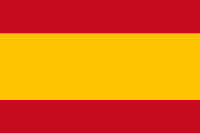Blockchain has gained significant popularity over the past few decades due to its global acceptance and convenience. Its potential has revolutionized several industries ranging from healthcare to online gaming. But what exactly is blockchain? Blockchain is an advanced database system that enables users to share transparent information within a business network. A blockchain database stores information in the form of blocks, which are connected together in a chain.
Blockchain was founded by a person or a group of people under the pseudonym of Satoshi Nakamoto in 2008. Blockchain technology was developed to operate without the need for any intermediaries like banks or governments. You are familiar with cryptocurrencies, right? Cryptocurrencies are digital currencies that leverage blockchain technology to ensure transparency and security.
If you want to learn more about blockchain technology, you have come to the right place. In this article, we will explore the basics of blockchain transactions, highlighting the verification processes, transaction fees, and their importance.
What is a Blockchain Transaction?
You are probably familiar with blockchain transactions if you have spent some time online because they are common and have gained significant popularity nowadays. There is no chance you grasp everything about blockchain transactions, how they work, their fees, and other aspects. A blockchain is a public ledger of digital information that anyone can access but cannot modify.
A blockchain transaction is the process of transferring data across a blockchain system’s computer network. The computer network stores the transferred data in the form of replicas, commonly known as a digital ledger. Each and every transaction will be recorded on this digital ledger that cannot be reversed or modified.
A person will initiate a transaction in their application and send it to the blockchain. The transaction will be moved to a queue with other pending transactions. It will be stored in a block, once enough miners have confirmed the transaction.
Blockchain technology leverages P2P (peer-to-peer) networks to develop a safe and shared ledger where every transaction is recorded as irreversible time-stamped digital blocks. Since it is a decentralized ledger of transactions, only users involved in the blockchain network can validate transactions.
How Does Blockchain Transaction Work?
The chronological distribution of blocks containing transactional data to the blockchain is known as a blockchain transaction. Many changes are made to the entire operation when money or data is involved. Compared to regular banking, this process could several minutes even for significant transactions.
Up to 36 nodes may be needed for each block addition in order to validate the transaction and ensure the security of the currency transfer. Consequently, one could think of a blockchain transaction as the next phase of international financial polygamy.
When a blockchain transaction is completed, there will not be any refunds, cancellations, or returns. It is not possible to modify the data or delete the transaction record. This advantage has increased the reputation of blockchain transactions among users. The irreversible feature of blockchain transactions makes it ideal for several business industries, such as financial services, supply chain management, and government transparency programs.
In the case of a centralized financial system, users have to pay certain fees to the authorities to execute transactions. However, blockchain technology lets users add and verify data without paying any fees. Each and every transaction happening on a blockchain can be tracked, allowing users to keep track of blockchain transactions.
How Are Transactions Verified in a Blockchain?
The blockchain contains code blocks that are connected together and depend on the agreement between participants where the transaction takes place. Many nodes are there and they work as a decentralized ledger. Each transaction will get a digital signature whenever a new block is created.
Transactions on a blockchain are verified through a decentralized process involving nodes and consensus mechanisms. When a transaction is initiated, it is then broadcast to all nodes in the network. Each node checks the transaction’s validity, ensuring the sender has sufficient funds, and meets the predefined criteria.
How Do Miners Process Transactions?
Cryptocurrency mining is the process of creating new cryptocurrencies by resolving highly complex mathematical problems that verify transactions in the currency. The miner will receive a certain amount of particular cryptocurrency once mined it successfully. Miners process transactions on a blockchain through a structured sequence of steps:
Initiating Transaction: A user initiates a transaction using their wallet, which is then broadcast to the network and enters a memory pool of unconfirmed transactions.
Transaction Selection: Miners select transactions from this pool to create a new block, which includes transaction data and metadata.
Proof of Work: Miners compete to solve complex mathematical puzzles (proof of work) to validate the block. The first miner who solves it will broadcast the solution.
Block Verification: Other miners verify the proposed block. If valid, it is added to the blockchain, confirming all included transactions.
Rewards: The successful miner will receive rewards in cryptocurrency for their efforts in validating the transaction.
What is a Block Confirmation?
If you make a fund transfer through a bank, you will get a transaction confirmation, right? The confirmations you receive a proof that your transaction has been completed and legitimate. Similarly, when you make a transaction on a blockchain network, it will verify your transaction and confirm whether it is legitimate before adding it to the blockchain. Simply, block confirmation, also known as blockchain confirmation is the process of validating and adding your transaction to a block in the blockchain network.
Once you make a transaction, it will be in the blockchain network’s queue of unconfirmed transactions, in a waiting area called a mempool. The transaction must be verified and confirmed by miners or validators.
The time for confirming blockchain transactions varies from one blockchain to another depending on how long it takes to add a block to the blockchain. For example, on the Bitcoin network, a blockchain confirmation happens every 10 minutes, meaning it can process 6 confirmations per hour. Transaction speed varies depending on several factors such as transaction fees, network congestion, and mining difficulty.
What is a Transaction Fee, and Why is It Needed?
A transaction fee, also known as a mining fee, is a certain amount of cryptocurrency that a user has to pay for validating and processing transactions on the blockchain network. Every user has to pay the transaction fee because these fees are necessary for the maintenance and proper working of blockchain networks like Bitcoin, Ethereum, and Litecoin.
Benefits of Transaction Fee
- Transaction fees help alter malicious activities and spam transactions.
- Miners will get additional funds from transaction fees for adding transactions to the blockchain.
- Transaction fees let customers pay more to increase their transactions.
- Transaction fees contribute to the development and enhancement of blockchain technologies.
Conclusion
Now you have understood everything about blockchain transactions, how they work, and their fees. Blockchain transactions represent a significant leap in how we conduct exchanges in an increasingly digital world. With its inherent security features and potential for automation, blockchain technology stands poised to transform various industries by providing a reliable framework for conducting business without traditional intermediaries.
The future of blockchain transactions looks promising as industries continue to explore its potential beyond cryptocurrencies. From finance to healthcare and beyond, blockchain could redefine trust in digital transactions.






